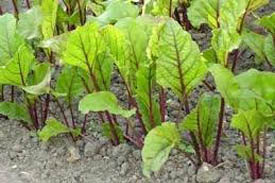Gardening: ESCARGOT IN YOUR GARDEN
 When Diane and I were dating, she relates how I used to take her out to exotic restaurants where vintage wines, fine foods and luxurious service were always the best…Nowadays, she comments, she is chained to a stove. Well such is the fate of women, but down deep I know that she is much happier cooking me exotic meals than having to get all dressed up and go out. Am I right Ladies?
When Diane and I were dating, she relates how I used to take her out to exotic restaurants where vintage wines, fine foods and luxurious service were always the best…Nowadays, she comments, she is chained to a stove. Well such is the fate of women, but down deep I know that she is much happier cooking me exotic meals than having to get all dressed up and go out. Am I right Ladies?
OK, so I am wrong. What I was leading up to was a dish of “escargot” is a fancy name for a really popular dish in Europe, and ultra swank restaurants in the USA. Escargot enterprises are starting to grow in the USA since the main ingredient, snails, are easy to grow and cheap to feed.
Snails…ugh. Oh well, from the gardener’s standpoint, they, like their close relative the slug, wreak havoc and are the focus of bitter thoughts against one of nature’s most beneficial creatures… except in the garden.
Snails have an external shell, and slugs and internal shield, not unlike the snail’s shell, except soft. Both are the bane of gardeners and have soft bodies that exude a silvery trail of mucus in their nightly dining on your garden labors. Some gardeners ask why God made the family: Mollusca, and what did Adam do in the Garden of Eden. Well, we first must consider that snails and slugs are necessary in a natural state to reduce dead and decaying vegetation to humus along with the other beneficial organisms in nature’s way. As far as Adam was concerned, all garden produce was “wild” in our sense, and he probably looked at all things as God’s plan and purpose. I suspect he was the first true organic natural gardener.
However, the modern contemporary gardener is not in a Garden of Eden. He or she is raising hybrid and developed sensitive plants not in a wild natural state, but in an environment susceptible to attack from an imbalanced ecological standpoint. Snails and slugs thrive in a contemporary garden. Now what can we do about getting them out?
Snails and slugs, for our garden purposes are all the same. They attack delicate plants early in the season, especially lettuce, strawberries and peas. Organic gardeners who use natural mulches of straw, leaves and such through the winter, and who have not tilled them under last fall may be in for a big snail population this spring. If you have left over mulches you may be best advised to burn them, scattering the ashes on the compost piles. If you have faithfully tilled them under last fall, a second early tilling a couple weeks ahead of the final tilling/planting will kill off any remaining eggs.
Surrounding the garden, the lawns and fields, is a vast breeding ground for snails and slugs. The fresh scent of rotting mulches in the spring time and delicious lettuce, strawberry, and pea plants are such to attract these delicate little hungry creatures who possess over 40,000 “teeth” for chewing. Helen and Scott Nearing in their delightful books on Living the Good Life, comment on building massive stone walls where once up to a certain height, the snails and slugs would give up. Let’s hope your problem is not that bad that you are considering stone walls; but what is it about stone walls that would repel these creatures? It is the rough surfaces. Snails and slugs have a delicate foot and can not stand rough materials to climb on. Back2theLand gardeners with years of wisdom behind them have been using the rough surface concept of control with good results.
For example, mollusca, will avoid barriers of sharp sand, wood ashes, lime or diatomaceous earth which is sprinkled around the plants.
I think the diatomaceous earth, sold in most garden centers and catalogs is the best. Take care though, even though it is organic, breathing the dust can be harmful.
Mulches, always a favorite of the natural gardener, is best made with oak leaves and/or wood shavings, at least on top of other mulches as a mollusca deterrent. Strawberries do best with a bottom mulch of alfalfa to stimulate growth and a top layer of oak leaves, well shredded or oak wood shavings to deter our little friends.
I am looking forward to relocating my chicken coop next to the garden, and at a selected time can let the sharp eyed chickens clean up any overpopulations of insects and mollusca after harvest time. Bantys are said to be excellent for this task. Since snails and slugs are nocturnal, coming out only in the dark, and do not like dry or cold weather, they have a tendency to crawl under things at morning’s light If you set out trap boards, rough shingles, especially under strawberry fruit clusters, you will collect several each morning. Just dump ’em in a bucket when you walk through the garden in the early morning and feed ’em to the chickens. If you don’t like that idea, then put some salt water in the bottom of the bucket they will expire quickly. The most famous method of getting rid of snails and slugs is to place shallow flat saucers of beer and a pinch of white flour flush with the soil level at several locations in the garden. They will be attracted to the fermentation odor, crawl in and expire after the sun comes up.
If you spray pesticides you will destroy the natural ecology of the garden whose many predators prey upon snails and slugs. For example, the beautiful lightning bug larvae, ground beetles, big fat spiders, salamanders, toads, garter snakes, chickens, and ducks all love escargot. Let nature help its own. If you indiscriminately toss chemical snail pellets, a poison, about the garden beds you will create a poisonous bait for dogs, cats and other warm blooded animals that stray into the garden. But most of all, those little pellets are great attractors for little children who will die from eating them. Avoid chemical poisons.
God Bless
COPYRIGHT: 2009 Back2theLand.com



